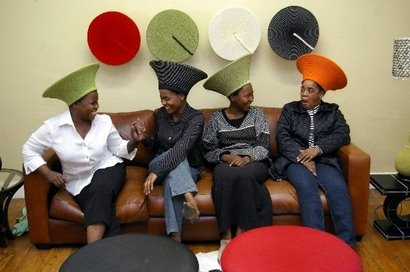
The season of Kwanzaa is here once again. Happy Kwanzaa to all who celebrate it.
Kwanzaa is a African-centred 7-day celebration which was developed by Dr Maulana Karenga in 1966. The aim of Kwanzaa is to reconnect Africans throughout the diaspora to their culture and reinforce the importance of family, community and unity. Kwanzaa is celebrated from 26 December to 1 January and is derived from an East African phrase in Swahili meaning 'the first fruits': matunde y kwanza.
There are seven basic and meaningful principles which are linked to Kwanzaa called the Nguzo Saba - Umoja (Unity), Kujichagulia (Self-determination), Ujima (Collective Work and Responsibility), Ujamaa (Cooperative Economics) Nia (Purpose) Kuumba (Creativity), and Imani (Faith). Each day of Kwanzaa celebrates one of the guiding principles. These seven principles should be practiced throughout the year.
Kwanzaa is celebrated by millions of Africans throughout the African diaspora. However, it is much more popular in America than it is in Europe but it is catching on here.
The traditional way of celebrating Kwanzaa is by decorating a table with the following seven basic symbols - the first one being Mkeka (a mat) which represents African history and the foundation we need to build. The following six symbols are placed on the Mkeka or next to it; Mazao (the crops) which represents African harvest celebrations and plentiful fruits and vegetables; Kinara (a candle holder) which is symbolic of African ancestors; Mishumaa Saba (seven candles) which represents the seven principles which we should strive to live by; Muhindi (ears of corn) symbolises our children; Kikombe cha umoja (the unity cup) symbolic of the principle and practice of unity and Zawadi (gifts) these are normally hand-made.
In addition to the symbols don't forget to include African art in your decoration.
There is currently a debate going on about Kwanzaa and it's meaning and whether we should be celebrating at this time of year or not. Our answer to that is we all have choices, if it is something that you feel you can buy into and celebrate go ahead, if not leave it well alone. Simple.
These principles are ones that can apply to all our everyday lives. Today is the principle Umoja which means to strive for and maintain unity in the family, community, nation and race.
Today I am grateful for the relationships that I have with my family and friends. But, I am also very grateful for the many wonderful people that I have come into contact with over time. Today I am responsible for all those I have met and all those I am still to meet.
Happy Kwanzaa.
 On this second day of Kwanzaa, the principle Kujichagulia (Self-determination) is celebrated. This is my favourite principle in the Nguzo Saba. I love the word and it's pronounciation (koo-jee-chah-goo-LEE-ah). You need determination just to pronounce it correctly! Most of all, I love it's meaning as it reflects what I strive to achieve and be.
On this second day of Kwanzaa, the principle Kujichagulia (Self-determination) is celebrated. This is my favourite principle in the Nguzo Saba. I love the word and it's pronounciation (koo-jee-chah-goo-LEE-ah). You need determination just to pronounce it correctly! Most of all, I love it's meaning as it reflects what I strive to achieve and be.



